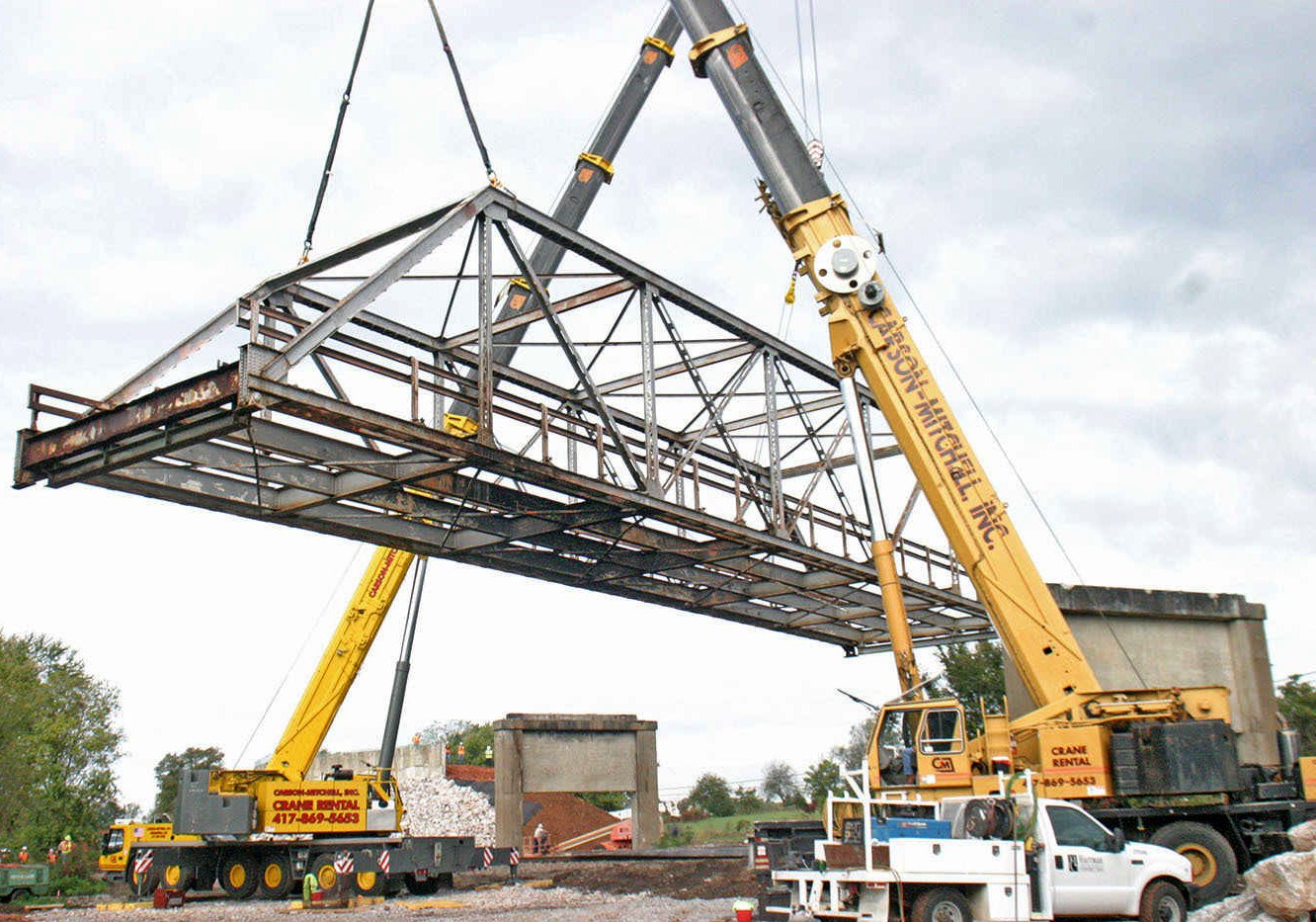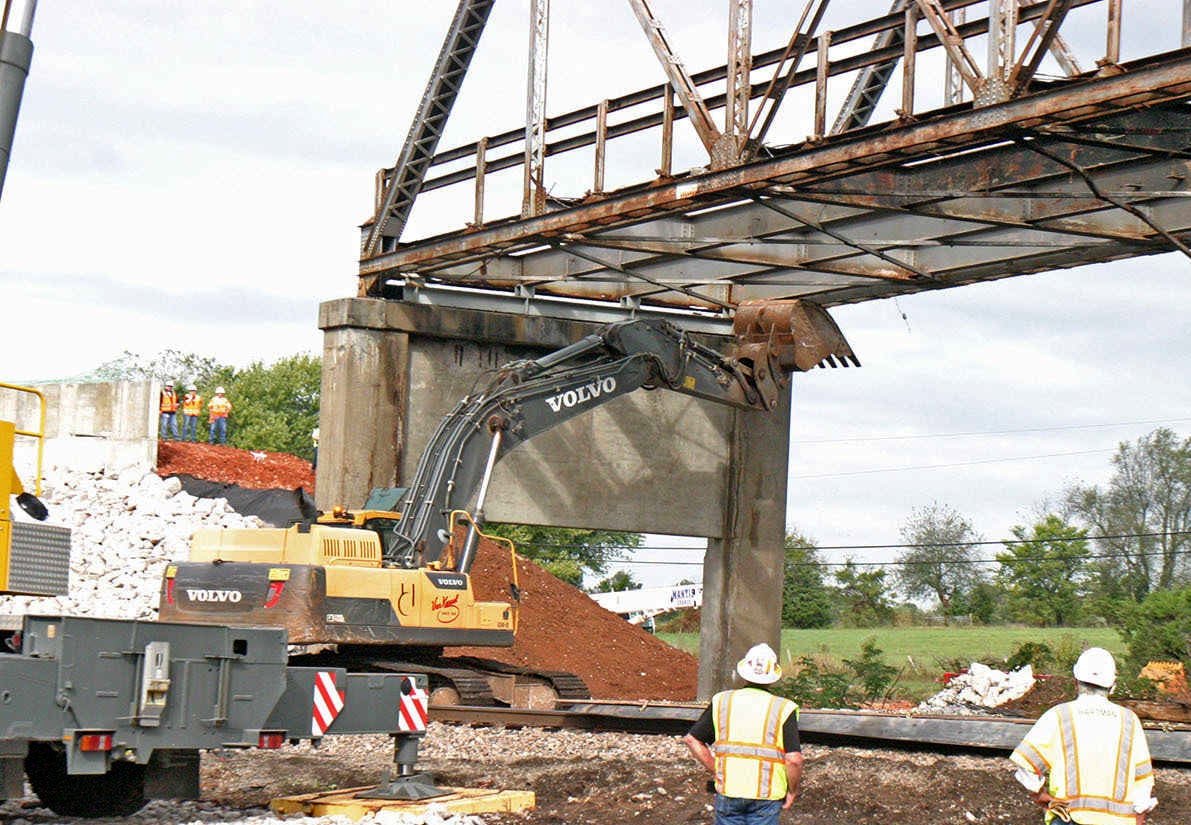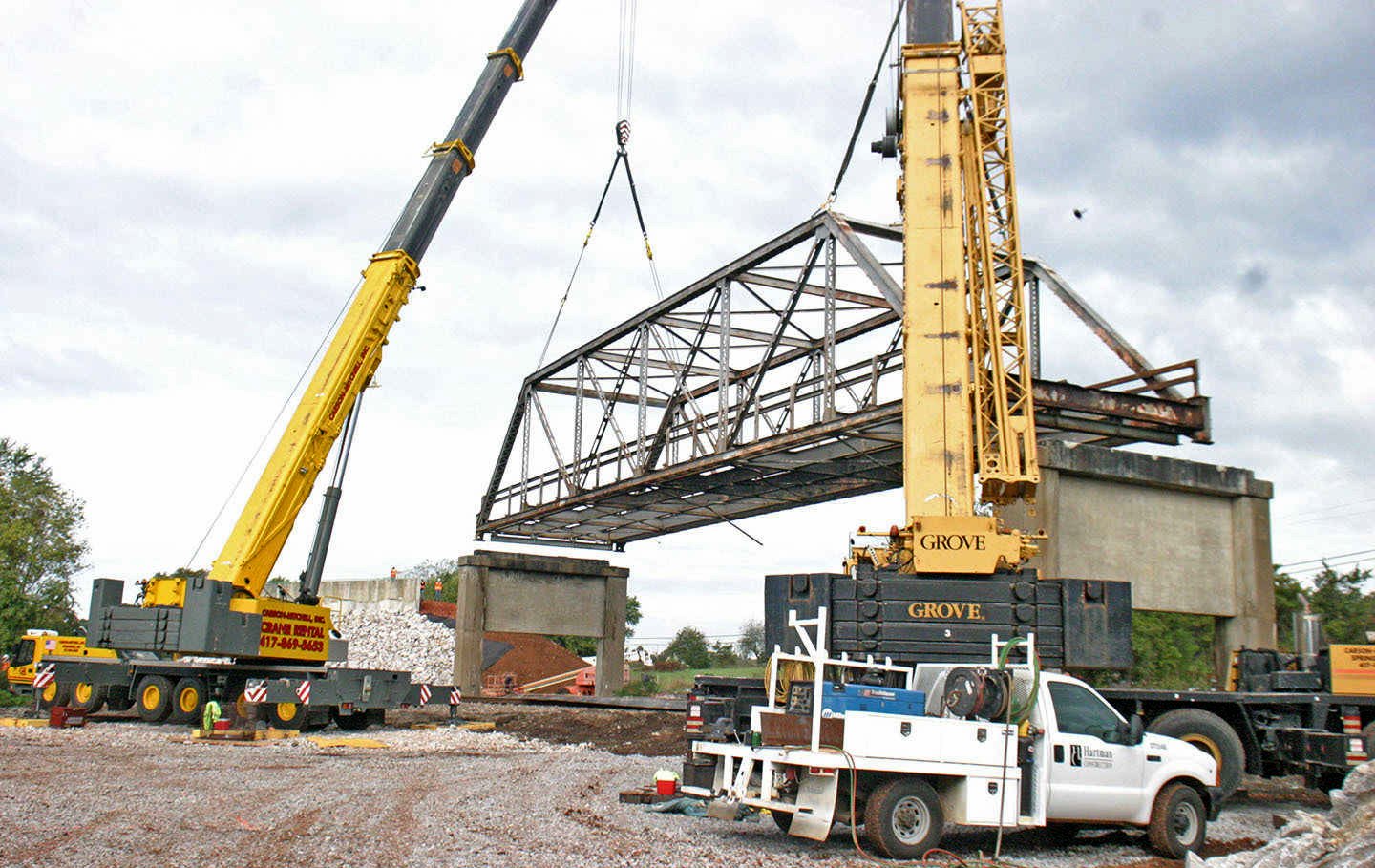An 80-year-old bridge over what is now the Burlington Northern Santa Fe Railroad was tandem lifted by a Grove GMK5210 and a Grove GMK6350 owned by Carson-Mitchell Inc. a general contractor, crane rental and rigging service in southwest Missouri without incident.

Plans called for a two-hour window to lift the trusses for the bridge down, using a 350-ton and a 210-ton All Terrain crane. The bridge was supposed to be lifted down at the end of July, but railroad officials, who had already approved a single crane lift, postponed approval until the two-crane approach was reviewed and deemed satisfactory. Crews for Hartman and Company built up the earthen approaches to the bridge in the meantime, separated the bridge from the roadway and knocked out the decking, leaving only the steel skeleton in place.

The bridge turned twice as crane operators positioned it to land for disassembly. Murray Bishoff/[email protected]
Despite plans to move the bridge after the 8 a.m. westbound train passed, railroad officials delayed the project further until a second train had passed west, leaving the scene at 9:15 a.m. While the crane crews attached their spreader chains to the trusses, other workers unrolled thick rubber mats across the tracks, then placed metal plates over the tracks to prevent any potential damage from falling debris.
When it came time to raise the bridge, the structure did not budge. Dan Bambery, the operations manager for Carson-Mitchell, noted the bridge was supposed to be 122,000 pounds. The All Terrain cranes were loaded with counter-weight to handle an even greater amount. After several tries, a Volvo excavator worked its way under both sides of the bridge and used its shovel to bang the underside next to the piers. After nudging both sides the structure groaned and came free.

After taps on the underside of the bridge with the shoveled arm of an excavator, the structure finally gave way, lifting clear of its concrete piers. Murray Bishoff/[email protected]
“Sometimes you need a little persuasion,” Bamberg said.
From that point, it took under under 19 minutes to lift the bridge down onto the southeast staging corner. Bamberg had hoped to do it in 15 minutes. The lift took place at 10:08 a.m. and ended in reaching the ground at 10:35 a.m. A drone was used by the Missouri Department of Transportation to video record the progress of the descent.

There was a sigh of relief among the work crew as the railroad bridge became airborne. Murray Bishoff/[email protected]
After touchdown, crews faced a new challenge. Another crew with acetylene torches set to work cutting the bridge in half, so part of it could be lifted to a different staging area, a process that took about two hours. Equipment crews had unloaded the 40-to-60 foot long steel piers to support the new bridge beside the planned staging area, leaving the only available space in the roadway.

When the bridge reached the ground, it sat squarely in the roadway, allowing metal cutters to promptly start on dividing the structure in half to clear room for vehicles to depart at the end of the day. Steel piers for the new bridge are visible at left. Murray Bishoff/[email protected]
Crews proceeded to load 10 tractor trailers with the counter-weights, after which the cranes rolled off the worksite by the end of the day.
Bamberg said the mobilizing costs were the most expensive part of the job.
Because the railroad delayed approving the use of two cranes, and the worksite was fully staged twice for the removal, boosting the price by $20,000.
The bridge ended up weighing 128,000 pounds, based on calculations by the two crane operators.
Dean Hartman, head of Hartman Construction, the general contractor replacing the bridge, said his firm presently has nine jobs underway, including four additional bridges.

Crews will next remove the old concrete piers and use a diesel fired hammer to drive the new steel piers in their place.
The contract for the project was awarded at $3,148,785. The new bridge will be six feet higher, have no overhead trusses, and a plain concrete wall on either side instead of steel girders. The bridge lanes will expand in width from 22 feet to 30 feet, with 12-foot lanes and three feet on either side for a shoulder.
The contract called for work to conclude by the end of December. After a nine-week layoff, meeting that deadline seems a bit less likely to members of the work crew. Traffic has been rerouted to Highway 60 to the south and Farm Road 2220 (Powerline Road) to the north via Highway W, west of the bridge.

Crane crews turned the bridge as they lifted it from its piers to the ground. Murray Bishoff/[email protected]

This is the sight of the last train going under the old Business Highway 60 railroad bridge east of Monett prior to its removal on Thursday. Murray Bishoff/[email protected]




